Updated: 28-Sep-2023
Saroléa or rather Maison Saroléa, established in Herstal, was the most important motorcycle manufacturer in that country and made a horizontally-opposed twin-cylinder engine of 916 cc giving 25 HP at 3,000 rpm (28 HP at 3,650 rpm).
-This engine was known as the horizontally-opposed twin-cylinder: “Epervier”, from 1935-36. It had double ignition and two carburetors.
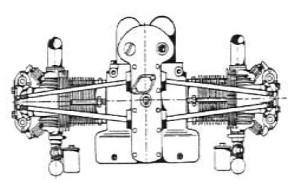
“Saroléa, Epervier”
-The Saroléa factory was created in 1850 to make small weapons.
-In 1892, it started to build bicycles and in 1898 it began to manufacture motorcycles, becoming one of the most important motorcycle manufacturer in Europe.
-However, its aviation engines do not use any motorcycle engine, perhaps some component, but it is clearly seen that they are new built.
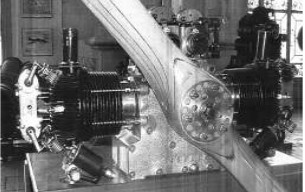
“Sarolea Engine”
-We see this Saroléa Epervier engine exhibited at the Brussels Museum.
-Since it was on a table, the constant level bowls of the carburetors had to be rotated.
-The “Albatross” model that gave 30 HP at 2,750 rpm, was built from 1937 to 1941 and had double ignition like the Epervier.
-It was seen installed on the Tipsy S-2.
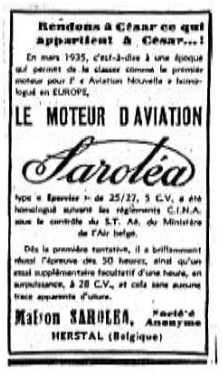
“Saroléa ad”

“Illustration of another Epervier”
-It is clearly seen that the two magnetos are on top of the engine.
-In the Albatross the configuration is different because the magnetos are at the rear.
-The carburetors are also behind the engine, with long intake ducts with smooth turns.
-All this gave an engine that was less tall and more suitable for installation in more refined hoods.

“Saroléa, Albatross”
-Another engine model, the “Vautour” gave 32 HP at 2,750 rpm. It had double ignition, and was built from 1935 to 1937. It has been seen installed on the Jodel Bébé.
-We received a clearer photograph of the Albatross engine.

“Sarolea Albatross”
From Appendix 9: A Saroléa Albatross engine hangs in the Warsaw museum, but upside down.
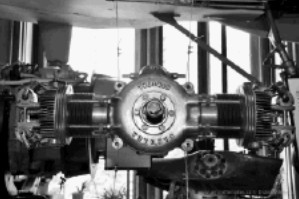
“Albatross of Sarolea, upside down”
-Perhaps it is to hide the lack of the magneto that should be at the rear, connected to the drag that can be seen in the following photograph.
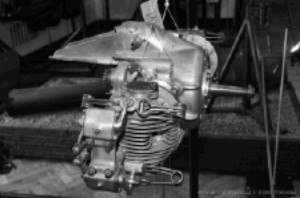
“Albatross without magneto or spark plugs”
-What can be clearly seen is the type of valve return springs.
From Appendix 12: The “Vautour” model had no illustration in the main text. Now we provide the one provided by E.V. from (AEHS) on his blog.
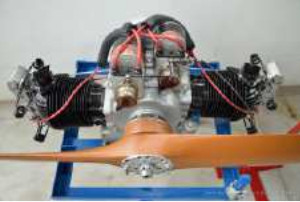

“Two photos, front and top view” (E.V.-AEHS)
-As a characteristic we have the two magnetos mounted out of phase and the clamp-type valve springs.
-Two illustrations of the Saroléa Albatross below.

“Saroléa Albatross”

“Front and plan view”
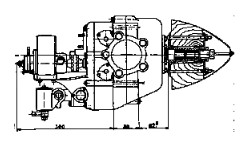
“Albatross side view”
Engines of SAROLÉA
Model: Albatross
Arquitecture:
Cooling:
Total Displacement:
Bore / Stroke: x
Power:
Weight:
Model: Epervier
Arquitecture:
Cooling:
Total Displacement:
Bore / Stroke: x
Power:
Weight:
Model: Vautour
Arquitecture:
Cooling:
Total Displacement:
Bore / Stroke: x
Power:
Weight:


